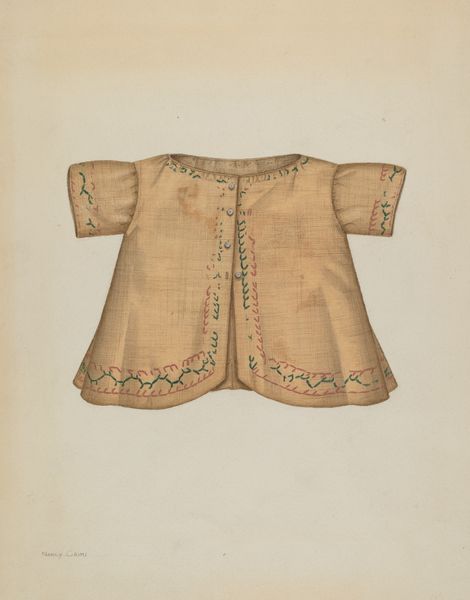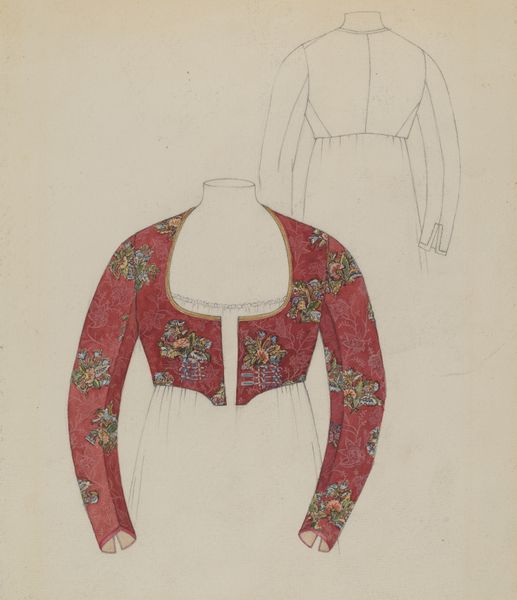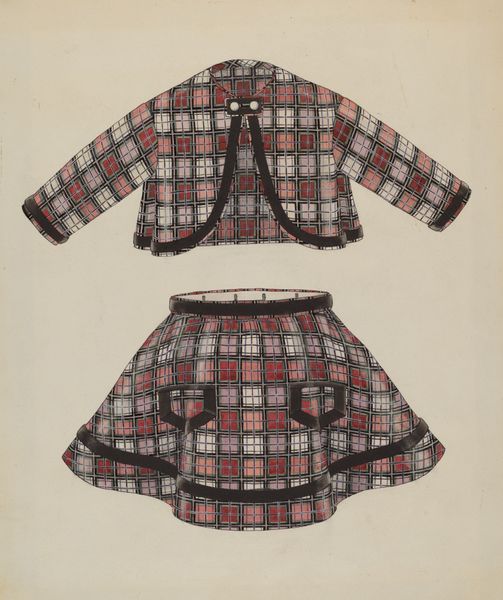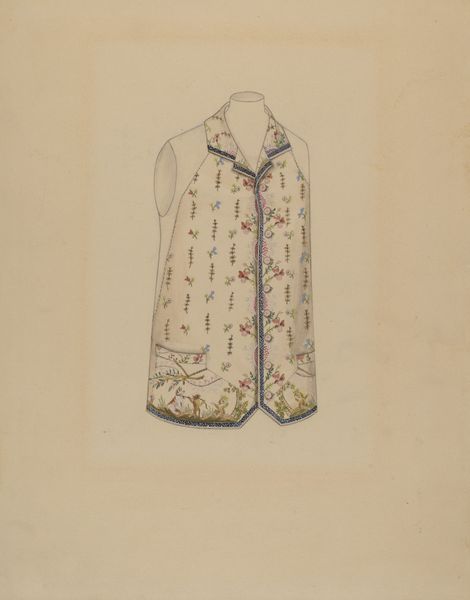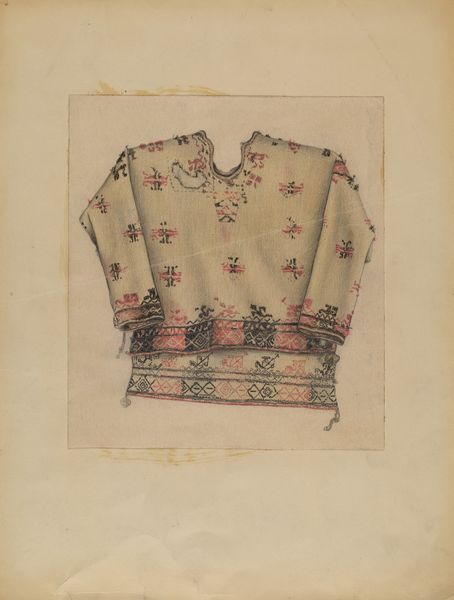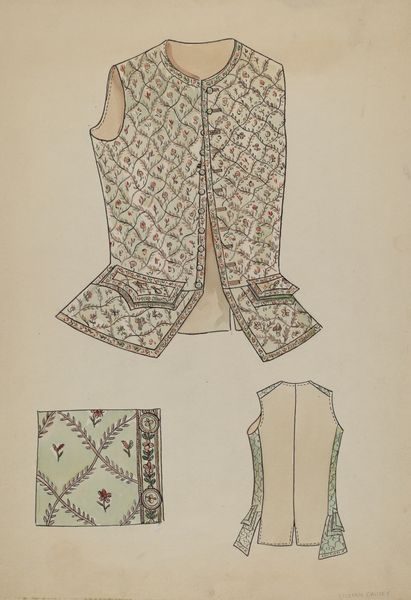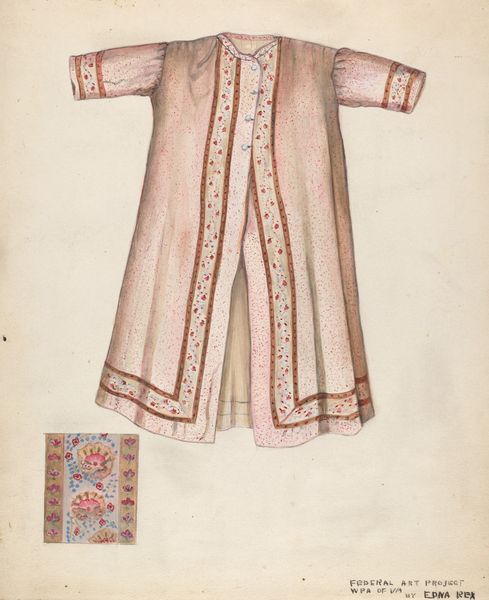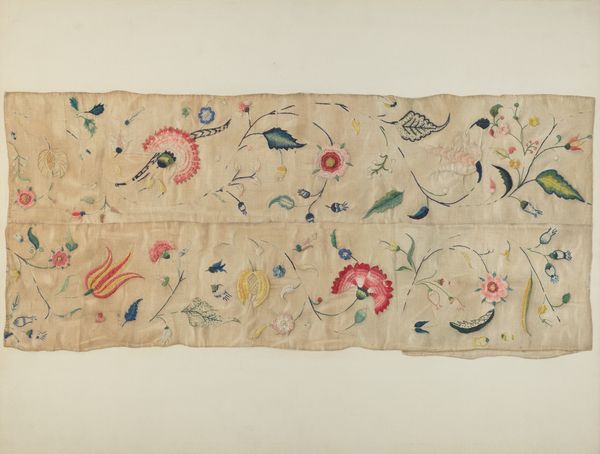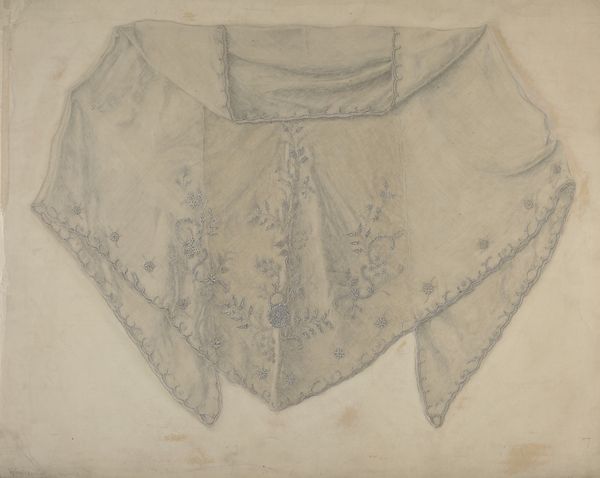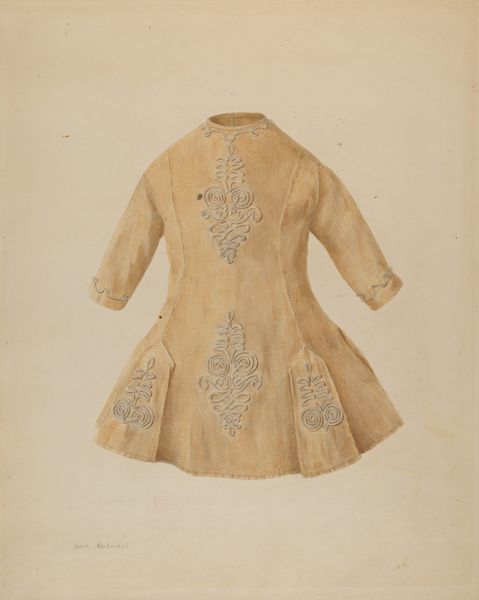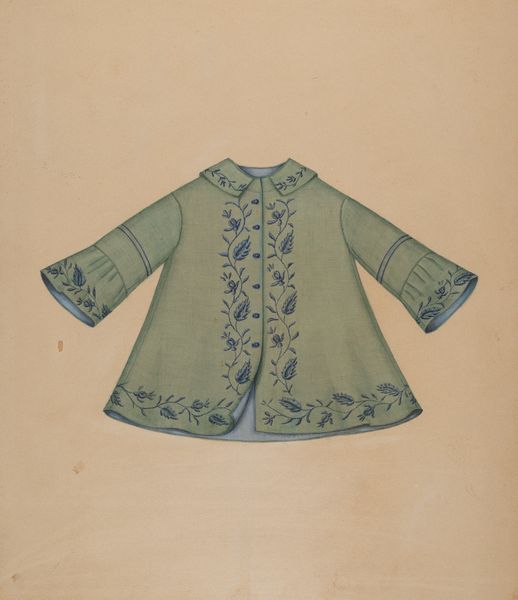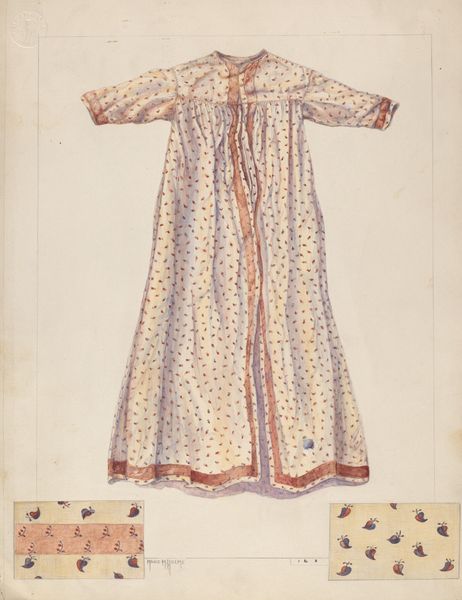
drawing, watercolor
#
drawing
#
watercolor
#
watercolour illustration
#
decorative-art
Dimensions: overall: 30.2 x 40.9 cm (11 7/8 x 16 1/8 in.) Original IAD Object: 7" high; 9" wide
Copyright: National Gallery of Art: CC0 1.0
Editor: Here we have Richard Taylor's "Child's Waist," a watercolor and drawing from around 1938. I'm really drawn to the meticulous rendering of the fabric pattern. It seems almost photographic, yet softened by the watercolour medium. How do you see the success of the image through composition, line and materiality? Curator: The appeal lies precisely in Taylor's acute attention to detail and his manipulation of form through tonal variations. Consider the artist’s precision in replicating the floral motif, repeated almost obsessively, forming a delicate, though complex tapestry of colour. The modulated light lends it volume and shape. Do you notice how the slight tonal shifts within the ground evoke a sense of subtle movement and dimensionality? Editor: Yes, it does! It prevents the whole thing from becoming too flat and static. Curator: Precisely. This interplay between detail and the medium of watercolour defines the visual experience. By embracing a flat pictorial space whilst retaining detail, Taylor achieves a tension within the decorative scheme. Note the simple repetition of flower motifs, organized in an implied geometric grid. How might such structure affect our engagement with the artwork? Editor: Perhaps it provides a framework for the eye, encouraging us to notice subtle differences and patterns that might otherwise be overlooked. The simple framework encourages observation of the small details that matter. Curator: Exactly. Furthermore, the drawing provides not just a faithful rendition of fabric. Look how the use of shadow implies weight to the shoulders of the form. Through delicate manipulation of material properties – here paint – we come to a closer consideration of representation in decorative art. Editor: That's given me a fresh way of looking at seemingly simple decorative art! Thank you. Curator: You’re most welcome. This process of close inspection always illuminates the formal means and visual effect intended by the artist, if only we attune ourselves to observe attentively.
Comments
No comments
Be the first to comment and join the conversation on the ultimate creative platform.
